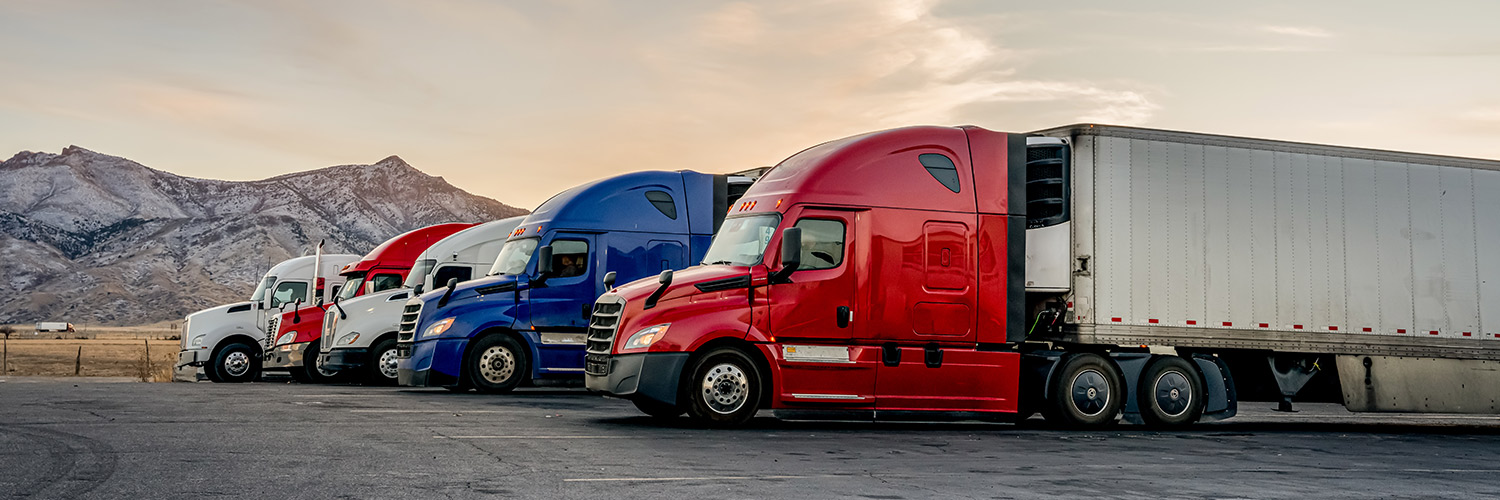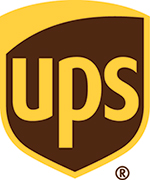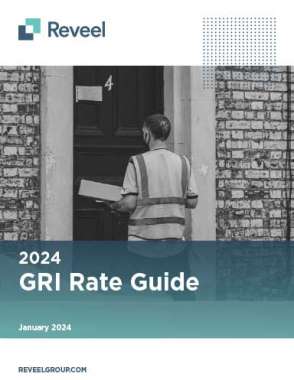UPS and Teamsters Reach New five-year Tentative Agreement
With only a few days remaining until the July 31 deadline, the contentious and on-again, off-again labor negotiations between Atlanta-based global freight transportation and logistics services provider UPS and the International Brotherhood of Teamsters reached an amicable outcome, in the form of a new five-year tentative agreement.
This outcome was far from certain, as negotiations through July—and prior to that—saw the parties ostensibly refusing to budge on certain terms and conditions, with the possibility of a strike, for the roughly 330,000 United States-based UPS Teamsters members looking more and more like a possibility as July moved along.
Carol Tomé, UPS chief executive officer, in a statement:
“Together we reached a win-win-win agreement on the issues that are important to Teamsters leadership, our employees and to UPS and our customers. This agreement continues to reward UPS’s full- and part-time employees with industry-leading pay and benefits while retaining the flexibility we need to stay competitive, serve our customers and keep our business strong.”
UPS officials said that the five-year agreement covers U.S. Teamsters-represented employees in small-package roles and is subject to voting and ratification by union members.
The Teamsters lauded this deal as the most historic tentative agreement for workers in the history of UPS, calling the contract overwhelmingly lucrative, raising wages for all UPS Teamsters workers, creating more full-time jobs, and including dozens of workplace protections and agreements.
Teamsters General President Sean M. O’Brien in a statement:
“Rank-and-file UPS Teamsters sacrificed everything to get this country through a pandemic and enabled UPS to reap record-setting profits. “Teamster labor moves America. The union went into this fight committed to winning for our members. We demanded the best contract in the history of UPS, and we got it. UPS has put $30 billion in new money on the table as a direct result of these negotiations. We’ve changed the game, battling it out day and night to make sure our members won an agreement that pays strong wages, rewards their labor, and doesn’t require a single concession. This contract sets a new standard in the labor movement and raises the bar for all workers.”
The Teamsters provided a list of tentative new UPS Teamsters National Agreement, which would run from 2023-2028, upon ratification, including:
- Historic wage increases. Existing full- and part-time UPS Teamsters will get $2.75 more per hour in 2023, and $7.50 more per hour over the length of the contract;
- Existing part-timers will be raised up to no less than $21 per hour immediately, and part-time seniority workers earning more under a market rate adjustment would still receive all new general wage increases;
- General wage increases for part-time workers will be double the amount obtained in the previous UPS Teamsters contract—and existing part-time workers will receive a 48% average total wage increase over the next five years.
- Wage increases for full-timers will keep UPS Teamsters the highest paid delivery drivers in the nation, improving their average top rate to $49 per hour;
- Current UPS Teamsters working part-time would receive longevity wage increases of up to $1.50 per hour on top of new hourly raises, compounding their earnings;
- New part-time hires at UPS would start at $21 per hour and advance to $23 per hour;
- All UPS Teamster drivers classified as 22.4s would be reclassified immediately to Regular Package Car Drivers and placed into seniority, ending the unfair two-tier wage system at UPS;
- Safety and health protections, including vehicle air conditioning and cargo ventilation. UPS will equip in-cab A/C in all larger delivery vehicles, sprinter vans, and package cars purchased after Jan. 1, 2024. All cars get two fans and air induction vents in the cargo compartments;
- All UPS Teamsters would receive Martin Luther King Day as a full holiday for the first time;
- No more forced overtime on Teamster drivers’ days off. Drivers would keep one of two workweek schedules and could not be forced into overtime on scheduled off-days;
- UPS Teamster part-timers will have priority to perform all seasonal support work using their own vehicles with a locked-in eight-hour guarantee. For the first time, seasonal work will be contained to five weeks only from November-December;
- The creation of 7,500 new full-time Teamster jobs at UPS and the fulfillment of 22,500 open positions, establishing more opportunities through the life of the agreement for part-timers to transition to full-time work; and
- More than 60 total changes and improvements to the National Master Agreement—more than any other time in Teamsters history—and zero concessions from the rank-and-file.
As for next steps, the Teamsters said that on July 31, representatives of the 176 UPS Teamster locals in the U.S. and Puerto Rico will meet to review and recommend the tentative agreement.
And it added that all UPS rank-and-file members will receive a list of improvements in the contract, with locals conducting member meetings and Teamsters will have several weeks to vote on the offer electronically. Member voting begins August 3 and concludes August 22. The UPS Teamsters National Master Agreement is the single largest private-sector collective bargaining agreement in North America, according to the Teamsters.
As previously reported, UPS and the Teamsters returned to the negotiating table on July 19, following weeks of tension between the parties, leaving many industry stakeholders concerned over the potential of a strike, which would have been costly for all involved parties, and the entire supply chain, by extension, as UPS moves roughly 6% of U.S. GDP and moves more than 27 million packages in the U.S. per day.
The fact that the parties returned to the negotiating table represented, at the time, at least a form of modest progress, considering that on July 5, the Teamsters stated that negotiations had collapsed, with UPS having made what the Teamsters called an “unacceptable offer to the Teamsters that did not address members’ needs,” leading to the UPS Teamsters National Negotiating Committee, which represents the 340,000 full- and part-time worker UPS Teamsters members, to reject the offer.
What’s more, the Teamsters said that UPS refused to give the Teamsters a last, best, and final offer, telling the union the company had nothing more to give. As previously stated, the Teamsters said that its UPS members will not report for work after July 31, at the expiration of the current contract, which was indicated by 97% of UPS Teamsters members authorizing a strike last month.
A July 16 Bloomberg report noted that “the last major sticking point for renewing a new five-year labor agreement has to do with the Teamsters asking for higher part-time wages.
The report cited the Teamsters’ O’Brien as saying it is unacceptable that 100,000 part-time UPS workers make less than $20 per hour.
UPS countered that earlier this month, stating that part-time union employees at UPS currently make an average of $20 an hour after their first 30 days of employment and receive wage increases every year, in addition to cost-of-living adjustments.
And in addition to competitive pay, the company said UPS part-time employees receive the exact same industry-leading health and medical benefits as full-time employees.
UPS:
“They are among just 7% of U.S. private sector employees to receive a pension, and also receive healthcare benefits with no premiums and low or no copays. Starting part-time wages are $16.20 (at minimum).”
UPS said it was making preparations, in the event of a strike. UPS said in a statement issued on July 14:
“We remain focused on reaching an agreement with the Teamsters that is a win for UPS employees, our customers, our union, and our company before Aug. 1. While we have made great progress and are close to reaching an agreement, we have a responsibility as an essential service provider to take steps to help ensure we can deliver our customers’ packages if the Teamsters choose to strike.”
To that effect, UPS said that in advance of a potential strike, many of its U.S. employees were participating in training that would help them safely serve its customers if there ended up being a labor disruption.
UPS adds:
“This temporary plan has no effect on current operations and the industry-leading service our people continue to provide for our customers. This training is aligned with our ongoing commitment to safety and business continuity. These activities also will not take away from our ongoing efforts to finalize a new contract that increases our employees’ already industry-leading wages and benefits, allows UPS to remain competitive and provides certainty for our customers and the U.S. economy.”
Jerry Hempstead, president of Orlando-based Hempstead Consulting, observed that with a tentative deal in place, the most important thing now, for shippers, is to try to protect themselves from price increases that have to inevitably come in order to pay for all the concessions.
Jerry Hempstead:
“And as Big Brown [UPS] does the Purple Package Co. [FedEx] is most likely to follow. “In about 10 weeks the GRI silly season begins so, buckle up, we may be in for a bumpy ride.”
Tommy Storch, a transportation procurement expert at Insight Sourcing Group, stated that the current agreement is likely to have a significant impact on the market, observing that with the increase in workers' compensation, UPS is expected to transfer the cost to customers through higher rates.
Tommy Storch:
“This move aligns with UPS's recent stance of focusing on being ‘better, not bigger,’ and rejecting contracts during the pandemic.”
Storch added:
“Last year, UPS implemented a general rate increase of 6.9%, which was a full percentage point above the typical 4.9% to 5.9% increases. Considering the additional compensation for workers, we should anticipate a rise of at least 8% following this new contract, when factoring in accessorial and fuel increases as well.”
Storch added that this increase will serve as a market pricing benchmark, of sorts, with FedEx following and prices rising significantly overall, with regional carriers seeing benefits, as some of whom have already obtained new customers due to the threat of a strike.
Article Topics
UPS News & Resources
UPS rolls out fuel surcharge increases UPS Struggles in First Quarter With Steep Earnings Decline UPS reports first quarter earnings decline Amazon Logistics’ Growth Shakes Up Shipping Industry in 2023 FedEx and UPS to Charge Additional Delivery Fees in Major U.S. Cities Parcel Experts Weigh in on New Partnership Between UPS and USPS Parcel experts examine the UPS-United States Postal Service air cargo relationship amid parcel landscape More UPSLatest in Transportation
City of Baltimore Files Lawsuit to Recoup Money for Collapsed Bridge The Era of Self-Driving Tractor-Trailers Set to Begin Is the Trailers as a Service (TaaS) Model Right For Your Business? Why Grocery Shoppers are Leaving Stores to Buy Their Food Online Unlocking Efficiency: Navigating Sea Freight Logistics in Supply Chain Management Is There a Next Generation of Truckers? Data Reveals Grim Outlook A Look at Baltimore’s Key Bridge Collapse—One Month Later More TransportationAbout the Author















